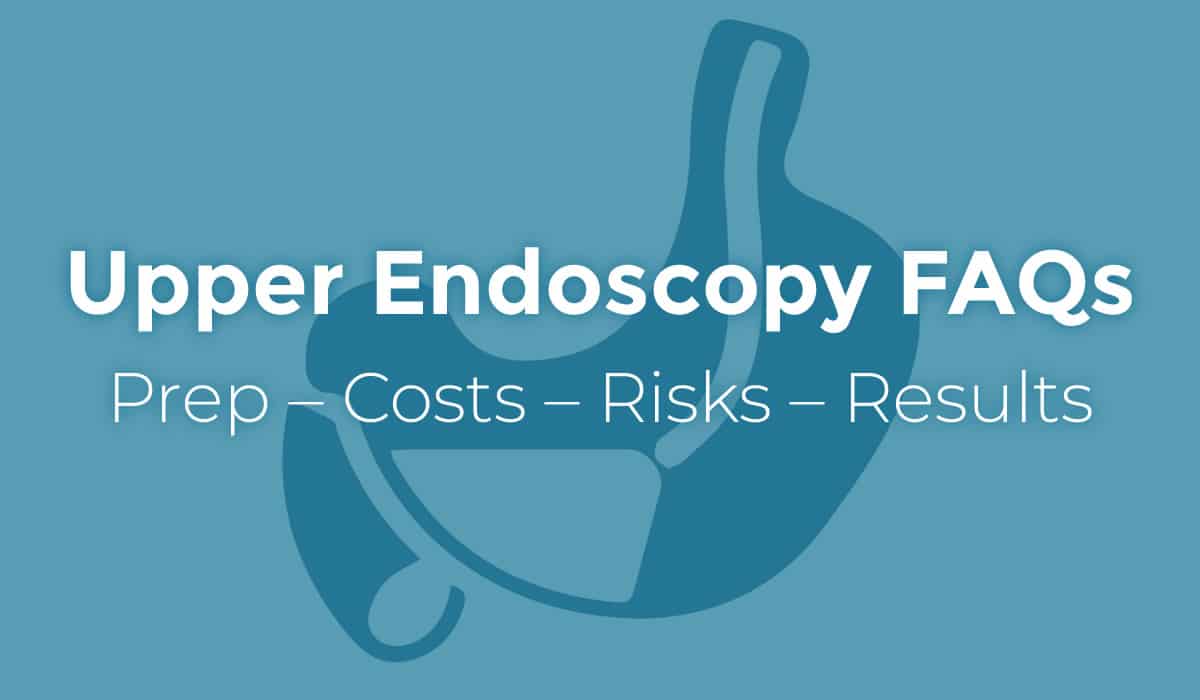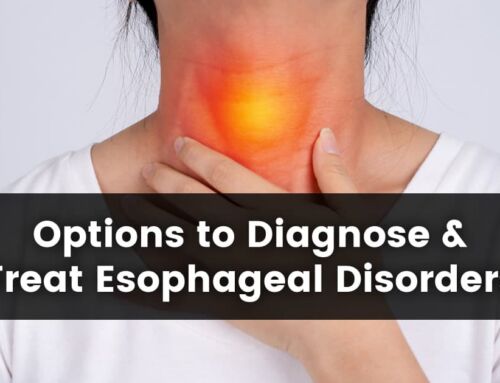When experiencing symptoms that affect the upper GI tract (esophagus, stomach, small intestine) like reflux or trouble swallowing, your doctor may want you to have a procedure called an upper endoscopy or EGD. The endoscopy procedure can be used to:
- Investigate symptoms
- Diagnose conditions
- Apply treatments by passing special tools through the endoscope
- Surveillance of chronic medical conditions
While this is a very routine procedure, it can be somewhat daunting to think about having a small tube inserted down your throat even if you are under anesthesia. To help patients better understand the EGD procedure and hopefully alleviate any anxiety/questions, Dr. Havranek has created this endoscopy FAQs page.
If you have any questions regarding the EGD procedure, please call the office at 210-615-8308 and we would be happy to assist you.
ENDOSCOPY FAQs
What are the different types of endoscopy procedures?
While there are several types of endoscopic procedures, we will be exclusively discussing the Upper Endoscopy or EGD procedure with this FAQs page as that is by far the most common type performed.
What is an upper endoscopy procedure?
The American Society for Gastrointestinal Endoscopy defines endoscopy as a procedure using an endoscope (a small thin flexible tube with a camera on the tip) to diagnose or treat a condition. The EGD is a procedure where the endoscope is passed through your mouth while you are sleeping to evaluate your esophagus, stomach and proximal (first 2-3 feet) of small bowel.
To learn more about this procedure, please visit our upper endoscopy page.
What is the purpose of an upper endoscopy procedure?
There are many reasons why we perform upper endoscopy. The most common are to evaluate:
- Gastro Esophageal Reflux Disease (GERD)
- Abdominal pain
- Anemia
- Chronic diarrhea
- Nausea and vomiting
- Dysphagia (trouble swallowing)
- Bleeding in upper GI tract
- Gastric or esophageal cancer
What type of doctor performs the upper endoscopy procedure?
Most often a gastroenterologist will perform upper endoscopy. Gastroenterologists are experts in the gastrointestinal tract and receive specialized training in endoscopy and issues related to endoscopy, which makes them the preferred choice over other specialists to evaluate the GI tract.
Is an office visit required to schedule an EGD procedure?
Not at Dr. Havranek’s office. The patient can have their primary care doctor send a request form or the patient themselves can call his office directly to schedule an EGD at 210-615-8308. You can also send a request through his web site and they will call you back to schedule.
How much does an EGD procedure cost in San Antonio?
Like most all medical procedures, the cost of an EGD procedure in San Antonio varies based on the patient’s insurance plan. We accept most all major insurance plans and will work with you to help figure out if your plan covers the procedure or not, and if so, how much your out of pocket portion will be. If you don’t have insurance, cash pay patients can call Dr. Havranek’s office to receive a quote for an EGD.
If a patient or their insurance provider should need any clarification from Dr. Havranek’s office, please contact us at 210-615-8308. We are happy to assist with any insurance questions.
What is the difference between upper endoscopy and a colonoscopy?
Upper endoscopy allows the gastroenterologist to evaluate the esophagus, stomach and first 2-3 feet of small bowel. Colonoscopy is used to examine the lining of the colon.
The exams use different devices and insertion points. The endoscope device used in the EGD exam is inserted thru the patient’s mouth. A similar device called a colonoscope is used in a colonoscopy and inserted thru the anus. Its not uncommon to have both procedures done during the same visit.
What to expect the day of upper endoscopy procedure?
Patients will be asked to arrive at the endoscopy center at least one hour prior to their scheduled exam time. This will allow the nurses and anesthesia providers to go over everything with them in detail and go through their health and medical history so that we can keep them as safe as possible.
Prior to the exam, the nurses will answer any questions a patient may have. They will place an IV in a vein in the patients arm so that they can be given fluids and medications during the exam.
Also, Dr. Havranek will spend time going over things and discussing any questions the patient may have as well prior to the start of the exam.
The anesthesia provider will then give some medication through the IV to make you safe and sleepy. You will be asleep enough that you will not be aware the exam is being done and will feel no discomfort but awake enough that you are breathing on your own. The sedation wears off quickly and you will be awake a few minutes later in the recovery room.
After the exam, the patient will then be taken to the recovery room where a different set of nurses will monitor them closely until they are fully awake. Dr. Havranek will go over the results of the EGD exam with the patient before they leave the endoscopy center and copies of the pictures and reports will be given to the patient and will be sent to the patient’s primary care physician as well if needed.
Are you awake during endoscopy procedure?
No. Patients will be given medications thru an IV so that they will be comfortable and sleep thru the exam. The anesthesia provider stands by your side during the entire exam to make sure you are safe and comfortable. You will be asleep enough that you will not feel a thing or even be aware the exam is happening, but awake enough that you are breathing on your own.
Does endoscopy procedure hurt?
The endoscopy is not started until you are fully asleep and comfortable – you should not feel a thing. Afterwards, a patient may have a sore throat or feel bloated, although this is very rare and most patients don’t feel a thing. If you do have sore throat or bloating afterwards, these symptoms are normal and should dissipate within 24 hours. If they do not go away, please call your doctor.
Can you eat before endoscopy procedure?
Patients should not eat or drink anything for 8 hours prior to their EGD exam. This restriction is for the patient’s safety as it reduces the risk of vomiting during the exam.
Can you drive after endoscopy procedure?
No. Although you will be awake before you leave the endoscopy center it is essential that the patient bring a friend or relative with them that can safely drive them home. For your safety, your driver must be someone that knows you, not a taxi/ hired driver. And you cannot just walk home – yes, we’ve been asked this before.
Can you eat after endoscopy procedure?
Since you have not eaten in a while, you’ll most likely be hungry and thirsty. Dr. Havranek recommends starting slow by sipping on water or juice, which you will be given in the recovery room. The day of the exam eat small meals of easily digestible foods like soups, eggs and applesauce. Also, avoid alcohol consumption during the initial 24-hour period as well until the anesthesia is out of your system. Resume normal diet after one day.
How safe is an endoscopy procedure?
An upper endoscopy is considered to be a very safe procedure. Complications that could occur with an upper GI endoscopy procedure are – infection, bleeding, tear in the lining of esophagus or small intestine. Perforations are rare with an incidence of only .00033% as noted by The National Center for Biotechnology Information.
If a patient notices any severe abdominal pain, fevers, chills or bleeding after their procedure, they should contact their doctor immediately. Dr. Havranek will have his nursing staff go over these instructions with patients after their exam before they leave the endoscopy center.
How long is an endoscopy procedure?
An EGD procedure takes between 15-30 minutes. From the time you arrive at the endoscopy center to check in to the time your head home will be about 2 hours.
Where are endoscopy procedures performed?
EGD procedures are typically performed at an endoscopy center or hospital. Dr. Havranek performs EGD procedures at the San Antonio Endoscopy Center located at 8550 Datapoint Drive, Suite 100 San Antonio, TX 78229.
Some of the advantages of having your EGD exam at the San Antonio Endoscopy Center versus a hospital are – lower facility costs, ease of access (not a hospital parking garage), free parking, and you will not be exposed to the numerous sick hospital patients. Also, Dr Havranek will be there, he does not do these at the hospital.
What results are generated by endoscopy procedure?
The report you are given at the endo of the exam will contain pictures of your esophagus, stomach and small bowel and any abnormalities that were found. It will explain what the findings mean, how they relate to your symptoms and what the plan is to deal with or fix them if needed.
Any biopsies that are taken are then sent to a pathology lab for analysis by a specialized GI Pathologist. Those results typically take 5-7 days to get back. Once the biopsy results are back Dr. Havranek will email you a copy of the report as well as a note describing what it all means. This information will also be sent to your primary care physician. Then if needed, a follow up appointment in the office will be arranged as well.


